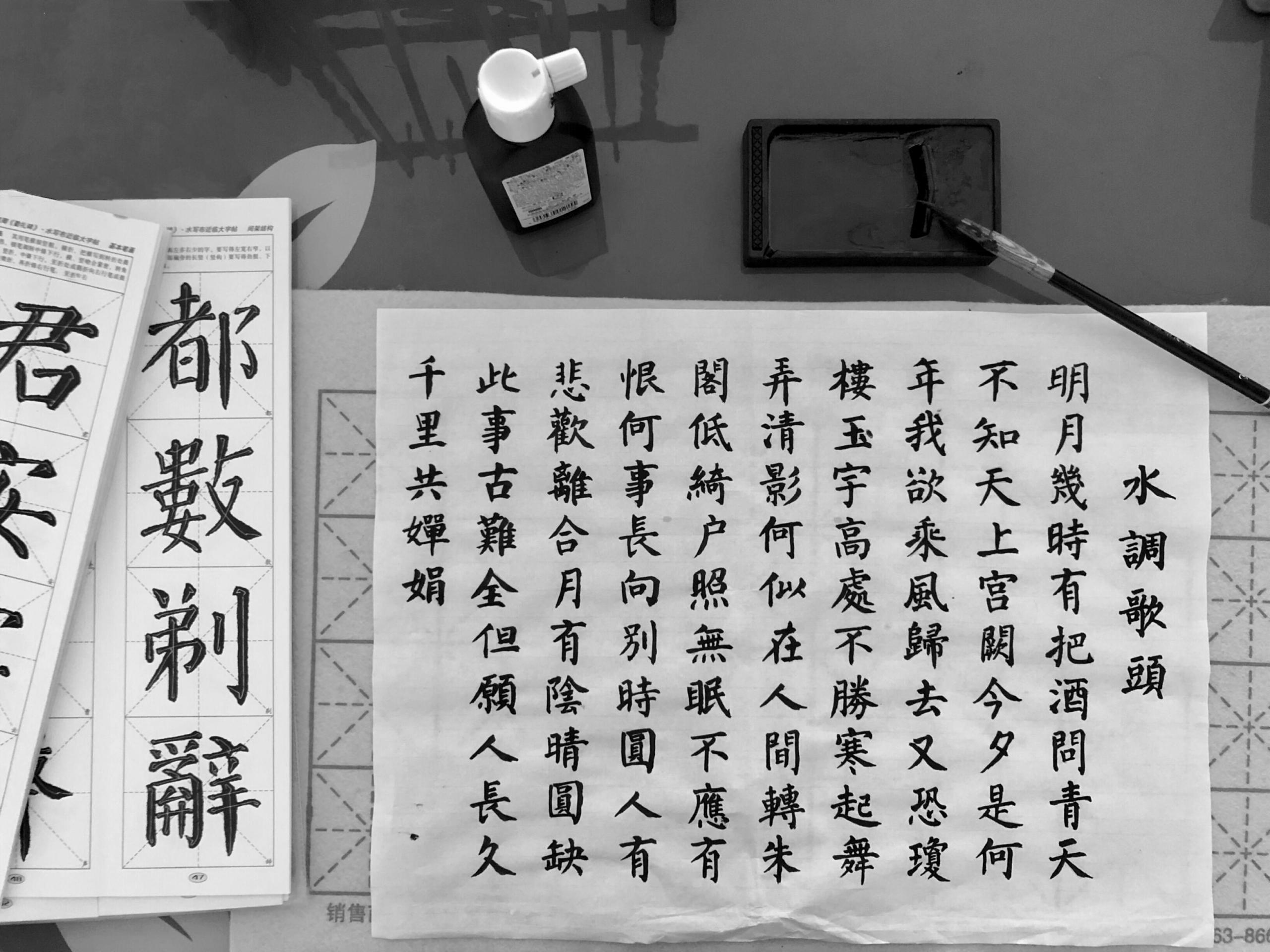You might be surprised to discover that Chinese, from a grammatical perspective, is relatively easy to learn, despite the challenge of mastering a large number of characters and words. According to the Chinese Language Institute, Mandarin Chinese has over 50 000 unique characters. However, only around 20 000 of them are commonly used. In fact, to read a newspaper, you only need to be familiar with two to three thousand basic Mandarin words.
But wait, there's more good news: Chinese has no gender, no conjugations and no distinction between singular and plural to worry about. In fact, all verbs remain in their infinitive form.
Want to give private lessons?
Join the Superprof community and share your knowledge with inquiring and motivated students.
Why Learn About Basic Mandarin Sentence Structure?
Even as a beginner, you can begin delving into the basic Mandarin sentence structure. By focusing on sentences as your foundation, you gain numerous advantages, such as the ability to start speaking right away and gaining insight into how people actually communicate. Additionally, you'll learn about the combination of tones within sentences and how words interact with one another. This approach allows for a holistic understanding of the language and its nuances.
Reasons to Learn Basic Mandarin Words and Sentences Early
- Due to its relative ease, learning Mandarin offers some quick wins in your language-learning journey.
- Since sentences serve as the fundamental building blocks of communication, focusing on them equips you with the necessary tools to start conversing relatively quickly.
- Learning through sentence structure provides an excellent opportunity to grasp the intricacies of Chinese grammar.
- By using Pinyin, the Romanised system for learning Chinese, you can observe how tones interact within authentic sentences. Pinyin serves as a helpful tool for foreign learners.
- Additionally, you can embark on the journey of reading Chinese characters alongside sentence learning.

Good News about Grammar Rules When You Learn Mandarin
It's truly exciting to discover that Chinese lacks verb conjugation!
There's no need to spend time expressing the future or past tense, and you don't have to worry about modifying verbs based on the subject. When constructing sentences in Mandarin, you always use the infinitive form of the verb, regardless of the person you are referring to. This simplicity in verb usage streamlines the learning process and allows for more straightforward sentence construction when you learn Mandarin.
Great news! Knowing that the majority of your time won't be spent on verb conjugation, you can master the verbs, and you're ready to construct sentences and dive into Mandarin language basics. It is also important for you to focus on Chinese tones in Mandarin, as well as reading and writing basic Chinese words and characters.
In Chinese, verbs have a fixed position within the sentence. Not only do they remain unchanged from their infinitive form, but they also do not move around. This means that all other words in the sentence, including adverbs, place or time words, and prepositions, are positioned before the verb. This arrangement follows a structured pattern.
Simple Sentence Construction for Basic Mandarin
To learn how to construct sentences in Chinese, it's helpful to understand how you form sentences in English. Start by recognising the elements you use for communication, and then examine their placement within the Chinese language. By grasping these basics, it will be easier to learn the structure of Chinese sentences.
Want to give private lessons?
Join the Superprof community and share your knowledge with inquiring and motivated students.
Basic Sentence Elements
In language, every word placed in a sentence has a purpose. For instance:
- The noun is the place, person or thing, e.g. sister, cat and dog.
- The subject is the noun that implements the action.
- Adjectives are the words that describe the noun, e.g. sad, short, boring
- The verb generates the action within a sentence, e.g. sit, jump, talk
- An adverb describes other words except nouns, e.g. pretty, loud, very
- The object is the noun that interacts with objects e.g. cheese, bread and milk
- Place describes where
- Time describes when

The simplicity of Chinese sentence structure should free you up to concentrate on learning the basic Mandarin words for creating well-structured sentences. In an estimated 80% of cases, a Chinese sentence consists of only a subject, a verb, and an object and this simple framework provides a solid foundation for sentence construction.
Understand English Sentence Structure
If you find Chinese challenging, try revisiting the intricacies of English grammar. As an English speaker, you naturally know how to communicate. However, understanding the underlying reasons for structuring sentences can help you with Mandarin language basics too. When creating an English sentence, there are five different sentence structures. Here are five examples.
- Subject + Verb: "She runs."
- Subject + Verb + Object: "I love pizza."
- Subject + Verb + Complement: "He is a doctor."
- Subject + Verb + Indirect Object + Direct Object: "She gave me a book."
- Subject + Verb + Direct Object + Object Complement: "They made her their leader."
Understanding Chinese Sentence Structure
Chinese sentences are both simple and complex.
The simplest sentences consist of at least two components: a subject and a verb or adjective. However, the most commonly used structure for simple sentences in Mandarin Chinese is subject-verb-object (SVO). This structure serves as the foundation for constructing other sentence patterns. In Mandarin language basics, simple sentences can also incorporate the following elements:
- The subject: This refers to the person or thing being discussed.
- The predicate: Contains the verb and expresses a state or action.
- The object: When a noun is controlled by the verb.
- Attributive: This modifies the noun or adjective.
- Adverb: Qualifies or modifies the adjective.
- Complement: Supports the adjective or predicate verb.
Understanding and using these components enhances both the complexity and expressiveness of Chinese sentences.
Simple Sentence Examples
In the examples below, you'll notice that every element in the sentence maintains its designated position, even when additional information is added. The word order remains unchanged.
- Subject + Verb + Object – e.g. w? ài t? meaning, I love him.
- Subject + Adverb + Verb + Object – e.g. w? zh? ài t?, meaning, I only love him.
- Subject + Adverb + Verb + Attributive + Object – e.g. w? zh? ài w? jì yì zhòng dì t? meaning - I only love my memories of him.
This constant structure allows for perfect communication and enables the addition of more information to the sentence without changing the word order.

Simple Phrases in Basic Mandarin
Coming across the vast array of Mandarin characters, particularly when presented in extensive volumes of books, learning Chinese and constructing sentences can seem like a daunting task. However, in truth, the opposite is true. Chinese features a straightforward structure that makes it surprisingly easy to grasp.
There are no intricate grammatical rules, conjugations, tenses, or genders to master. Instead, you can rely on a simple structure that is easy to remember. This simplicity in structure makes it an excellent starting point to learn Mandarin for beginners.
It’s important to remember where to place your Chinese verbs. The correct place for the verb to go is always after the subject.
The key thing to remember is the placement of the verb, which is very important. The right place for the verb to go is always after the subject. In very basic sentences this can be shown in 2 ways:
- Subject + predicate,
- Subject + verb + complement.
Remember that even if sentences are easy to build there are many other nuances to learning Chinese. Besides the verbs mentioned here, there are also Chinese tones and vocabulary from basic Mandarin words to more difficult ones.
The aim of this article which was to introduce you to Mandarin Chinese sentence structure, should ignite your enthusiasm into the remarkable language and culture of Chinese. Remember that as one of the oldest languages in civilisation, it carries significant history within its profound linguistic tapestry.
Finally, there are countless avenues to explore Mandarin through words and phrases: you could plan a trip to China for leisure work or study, you could engage in conversations with native Chinese speakers and even connect with new friends through online Chinese classes.
Whether it is learning basic Chinese words or a desire to learn Mandarin fluently, it is indeed the perfect time to embark on the journey of learning to speak Chinese.
Want to give private lessons?
Join the Superprof community and share your knowledge with inquiring and motivated students.





